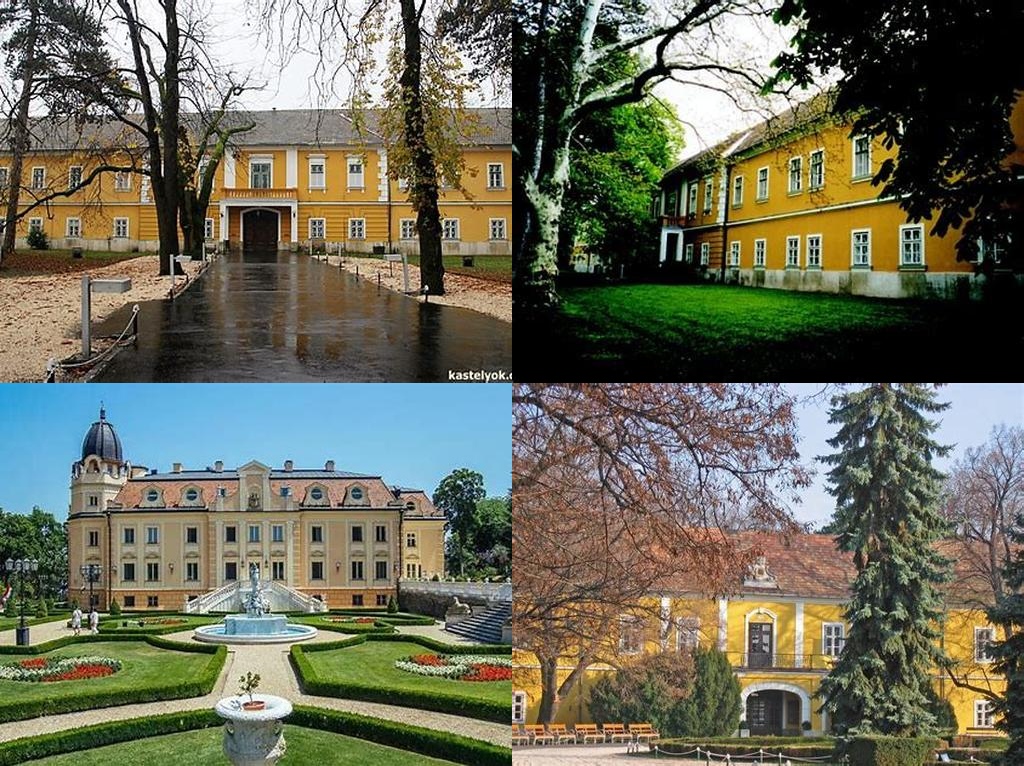
Szapáry-kastély in Bábolna isn’t your everyday castle; it’s a living piece of rural Hungarian history, where the romance of the aristocratic era meets the gentle pace of countryside life. If you’ve never thought about hopping off the busy urban trails and wandering through sleepy towns in western Hungary, this elegant manor might just convince you.
You’ll find Szapáry-kastély right at the heart of Bábolna—a town with centuries-old roots and a peculiar fame for its equestrian traditions. The castle itself radiates an understated air of nobility. It started as a country residence in the late 18th century, erected around 1790 under the watchful eye of the influential Szapáry family. Don’t expect fairy-tale turrets or dramatic drawbridges; this place is all about subtle dignity. With its classicist architectural style, symmetrically structured façade, and understated yet stately presence, the manor quietly declares its importance without showing off.
The history here is tangible. The Szapáry family played a significant role in Hungary’s history, not just as landed gentry but as supporters of agricultural innovation, and much of that legacy still echoes in the castle’s atmosphere. Step into the main hall and you can almost hear the footsteps of impeccably dressed guests arriving for lavish banquets in the 1800s, or catch the faint clinks of glasses from spirited debates about the future of Hungarian horse breeding—a legacy that Bábolna famously upholds to this day. The castle became intertwined with the state stud farm, which is directly adjacent and shares its own fascinating tales of Arabian horses and imperial ambitions.
Wandering around the estate, you’ll be struck by its serene park. Towering, old trees shade winding pathways, while an unexpected quiet pervades even on the busiest summer days. This isn’t accidental—it was designed that way. Manicured lawns and idyllic flowerbeds offer a tranquil escape from the outside world. Take a bench beneath one of the ancient oaks and you’ll instantly understand why the Hungarian elite once found solace here. The grounds are expansive enough for peaceful walks, yet intimate enough to feel like you’ve stumbled upon your own private retreat. Birdsong is likely to be the loudest sound you’ll hear.
A stay or visit here isn’t just about architecture. The castle’s most fascinating element is the way those walls hold memories—of wars survived, centuries-spanning love stories, and the evolution of Hungarian agriculture. Szapáry-kastély was confiscated during the tumultuous years following World War II, at a time when so many noble residences across the country were repurposed or neglected. Yet somehow, this estate managed to retain its dignity, evolving through different uses and caretakers, now welcoming curious wanderers much as it once welcomed high society and statesmen.
What sets the Szapáry-kastély apart—especially if you’re the kind of traveler who prefers authenticity over artificial grandeur—is its strong connection to real, working Hungarian life. The adjacent Bábolna National Stud Farm is no museum piece; it’s a celebrated site where world-renowned Arabian horses are still bred in much the same way as when the farm was established in the 18th century. The horses, often seen galloping within sight of castle windows, reinforce the narrative: this is a place where history and present intertwine.
Inside, you’ll encounter period details: curved stair railings, high-ceilinged corridors, and rooms that echo with a satisfying creak—patina, not polish. Guided walks often reveal secrets and anecdotes about the Szapáry lineage, and for the lucky, there’s even a chance to catch a local music event or community gathering within the historic halls. No velvet ropes or too-perfect reconstructions; it’s all refreshingly unpretentious.
In short, Szapáry-kastély isn’t so much about ticking off landmarks as it is about pausing, imagining, and absorbing the stillness of Hungary’s past. Whether you’re a dedicated history buff, a lover of horses, or simply looking for a place where beauty is humble rather than ostentatious, this castle in Bábolna offers time travel of the most authentic kind. Stand at the threshold, and you’ll see it’s still a doorway—to another era, to quieter rhythms, and to stories waiting, patiently, to be remembered.





